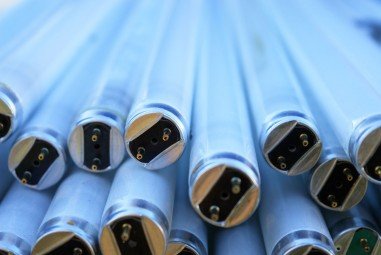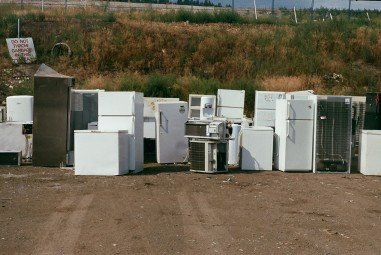Learn more about Hazardous Waste in England
Hazardous waste consists of a range of harmful and toxic materials found in almost all industries and homes across the country - and Wayst delivers safe and reliable solutions that mitigate any and all health and environmental risks involved in the disposal of it.
There are many different forms of hazardous waste with dangerous properties like being corrosive, caustic, carcinogenic, ecotoxic, flammable, harmful, irritant, infectious, mutagenic, toxic, or an oxidising agent. Some of the most common types of hazardous waste include asbestos, batteries, chemicals/liquids, paint, gas bottles, sharps, white goods, monitors/TVs, other waste electrical and electronic equipment, and fluorescent tubes. These can all be classified into three different categories; clinical waste is generated from healthcare and similar practices that may pose a risk of infection, such as human or animal tissues. Pharmaceutical waste is any waste containing medicinal drugs that are unused, expired, contaminated, damaged, or no longer needed, Chemical waste, lastly, is possibly the most commonly thought of when talking about hazardous waste, it is defined as waste that is made from harmful chemicals like antifreeze, batteries, flammable liquids, paints, ink containers, and pesticides.
It is our mission to evolve the waste industry into one that has the customer and the environment at heart. We began this mission by targeting some of the most impactful and dangerous forms of waste in circulation - hazardous waste - that requires the highest degree of care and professionalism in disposing of it correctly. Hazardous waste disposal services from Wayst not only deliver ideal solutions to the safe and proper disposal of your harmful materials, but also a cost-effective alternative that holds you and the environment as the first priority from start to finish of the process.
There are many different forms of hazardous waste with dangerous properties like being corrosive, caustic, carcinogenic, ecotoxic, flammable, harmful, irritant, infectious, mutagenic, toxic, or an oxidising agent. Some of the most common types of hazardous waste include asbestos, batteries, chemicals/liquids, paint, gas bottles, sharps, white goods, monitors/TVs, other waste electrical and electronic equipment, and fluorescent tubes. These can all be classified into three different categories; clinical waste is generated from healthcare and similar practices that may pose a risk of infection, such as human or animal tissues. Pharmaceutical waste is any waste containing medicinal drugs that are unused, expired, contaminated, damaged, or no longer needed, Chemical waste, lastly, is possibly the most commonly thought of when talking about hazardous waste, it is defined as waste that is made from harmful chemicals like antifreeze, batteries, flammable liquids, paints, ink containers, and pesticides.
It is our mission to evolve the waste industry into one that has the customer and the environment at heart. We began this mission by targeting some of the most impactful and dangerous forms of waste in circulation - hazardous waste - that requires the highest degree of care and professionalism in disposing of it correctly. Hazardous waste disposal services from Wayst not only deliver ideal solutions to the safe and proper disposal of your harmful materials, but also a cost-effective alternative that holds you and the environment as the first priority from start to finish of the process.























